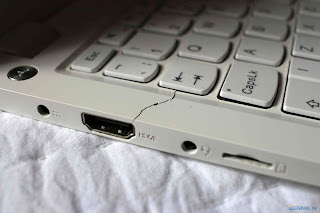Lenovo ThinkPad P1 Review: Portable Workstation
Laptops
often lack the original features of advanced computing, which is where portable
workstations come into play. With a powerful processor, rich storage space and
top-level screens, there are relatively few devices that meet the conditions.
Lenovo's 15.6-inch ThinkPad P1 is certified for use with ArcGIS, AutoCAD,
CATIA, Creo, Inventor, Microstation, NX, PDMS, Revit, Solid Edge, SolidWorks
and Vectorworks.
Laptop
manufacturers are always trying to reach the best point between power,
availability, ruggedness, portability and price. Although the ThinkPad P1 is by
far the thinnest, lightest and lightest workstation in Lenovo, it does not mean
it is particularly compact or lightweight, or at a low price - starting at
£1,549 (including VAT, £1,290.83, including VAT) ). All of this is traded to
meet the requirements of truly powerful computing.
Lenovo
has made the ThinkPad P1 the same
rigorous design and manufacturing standard as the ThinkPad X1 Carbon series. As
a result, the black chassis is strong and tough, and carbon fiber is used to
help reduce weight and strength. Even so, there is a weight of 1.7 kg.
The
15.6-inch screen
is really a requirement for workstations - any small screen size is not
suitable for CAD, animation, video design and other creative tools. Even the
15.6-inch screen is a compromise when you consider the size of the desktop
display used by most creatives.
But in
having a bigger screen, the packaging will increase the price and size of the laptop,
which is enough to handle a bag or backpack: 361.8mm by 245.7mm by 18.4mm.
Given
that this is a laptop for those design tasks, Lenovo could have used a more
adventurous approach to screen layout. The screen will lie flat on the table
but will not rotate. Mobile workstations like this may benefit from a
360-degree rotating screen, allowing the pen to be used in tablet mode and
making it easier to share content. Of course, HP will not shy away from the
more modern format. Its detachable ZBook X2 G4 puts all its computing power on
a tablet-style screen, and the keyboard is connected as a separate unit.
My
evaluation machine is equipped with a full HD (1,920 x 1,080) IPS panel with no
touch response. Non-reflective finishes are ideal for close-up detailing. I
found the 300-nits screen to be a bit surprising at maximum brightness - the
80% default setting for battery power is as bright as I might need. A 3,840 x
2,160 pixel IPS touch screen display is also available, but not shown in the
three pre-configured models on the Lenovo UK website.
The keyboard is
built to the high standards normally found in Lenovo. Those familiar, chubby
buttons are flexible and comfortable to use, while below them there is a large
touchpad with two physical buttons and a scroll wheel designed for the
TrackPoint between the G, H and B keys. This is a standard association
arrangement and is very effective. Use the Fn and Spacebars to switch between
two levels of backlighting and provide a shortcut to the Windows Snipping tool
through the Fn-PrtSc key combination.
Laptops
like this need to be powerful. The entry-level pre-configured model comes with
an Intel Core i5 8400H processor with a standalone Nvidia Quadro P1000 GPU and
8GB of RAM, but with the most expensive pre-configured models, you get the
Intel Xeon E-2176M processor, Quadro P2000 graphics card and The 32GB memory
option is available up to 64GB RAM and 4TB SSD storage.
It's
worth noting that only the most expensive pre-configured models run Windows 10
Pro for Workstations, and all three models have lower resolution FHD screens.
Raising this to the 3,840 x 2,160 touch option will further increase the price.
The
ThinkPad P1 has two Thunderbolt 3 ports, a pair of USB 3.1 ports, a full-size
HDMI 2.0 port, an SD card slot and a 3.5mm headphone jack. There is a
fingerprint reader and an infrared camera for Windows Hello, as well as an
option for a smart card reader. The camera at the top of the screen has a
Lenovo ThinkShutter privacy cover - just slide it over the camera to avoid any
accidental snooping.
It's a little
irritating that anyone wanting to use wired Ethernet will need to use an
adapter for the P1's mini-Gigabit Ethernet port, but at least a dongle is
provided.
For
devices like this, good battery life is a must, and it requires handling
demanding workloads on the move. Lenovo has evaluated the battery for up to 13
hours, but I don't believe it can be achieved when driving processors and
graphics cards. Using the four-hour mainstream workload of writing, browsing,
and streaming, I drained the battery by 40% and the screen defaulted to 80%
brightness to use battery power.
The
Lenovo ThinkPad P1 is a very compact notebook. It's still quite large and heavy
compared to a real ultra-portable notebook, but anything below the 15.6-inch
screen will affect its ability to achieve workstations. Even in FHD versions
without touch support, the display itself is first class.
Lenovo's
13-hour battery
life claims to be ambitious, but in the real world, such devices are likely to
spend most of their time in the office, moving from time to time into customer
sessions. The real problem is that if you want to specify high-end CPU, GPU,
RAM, storage and display options, things will become expensive.




评论
发表评论